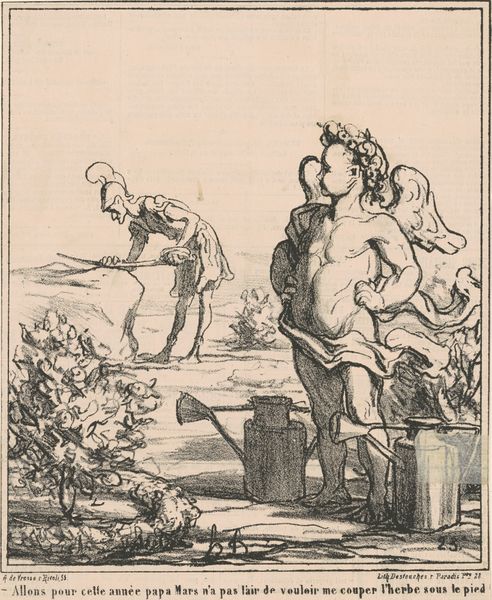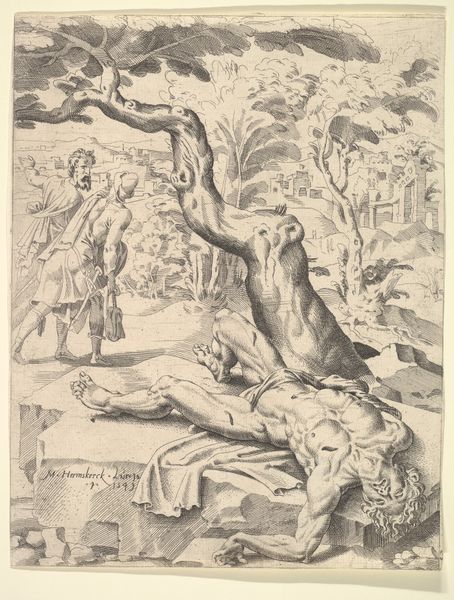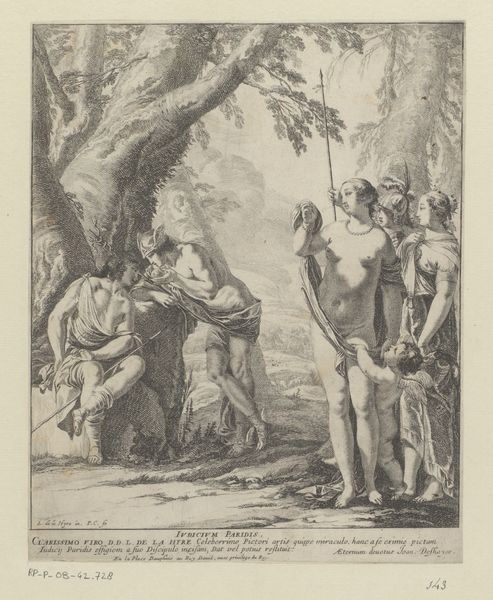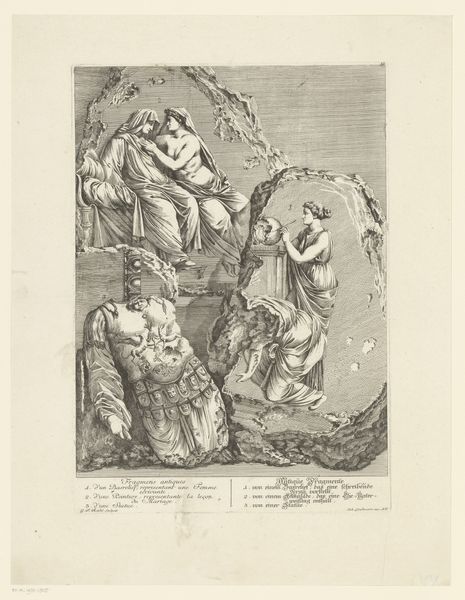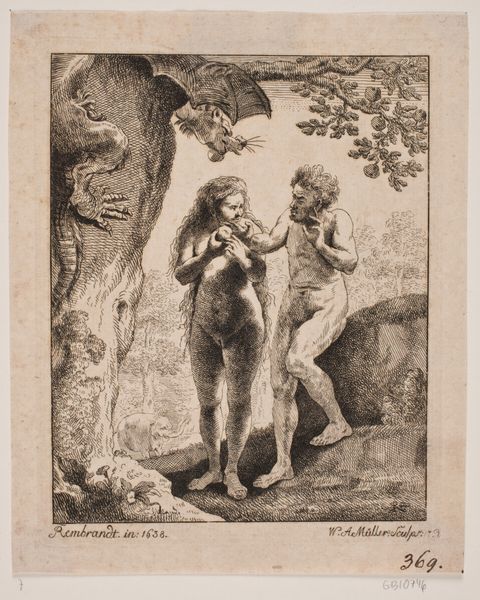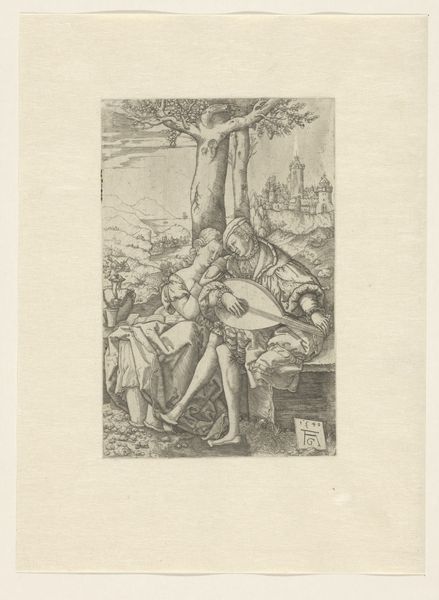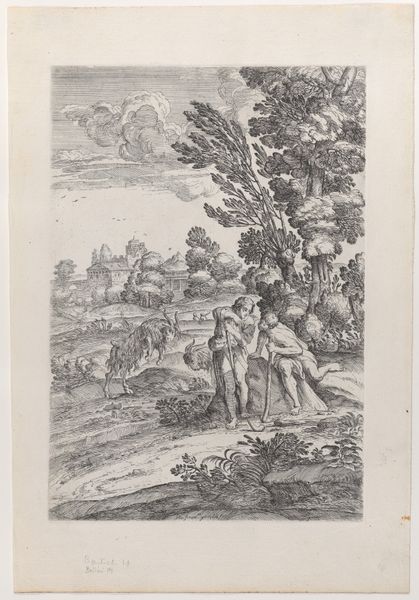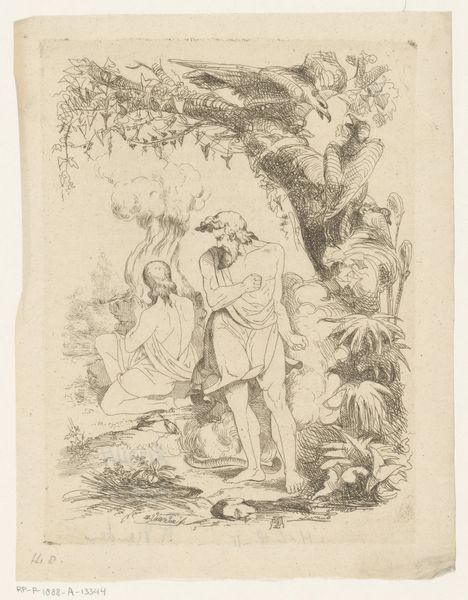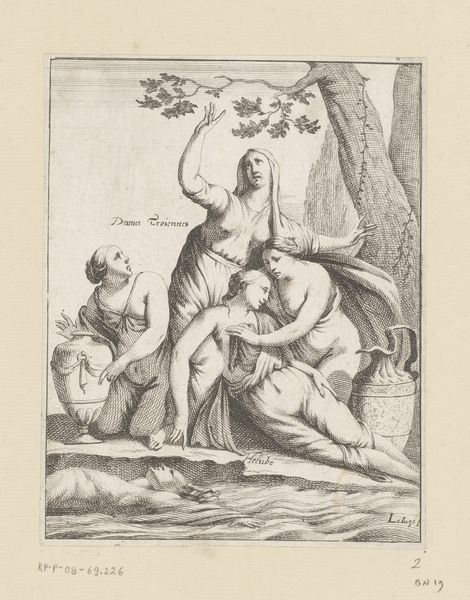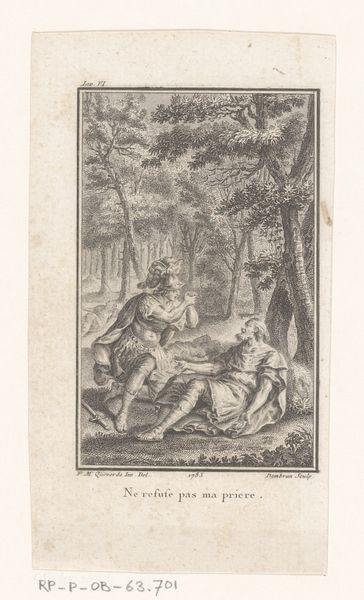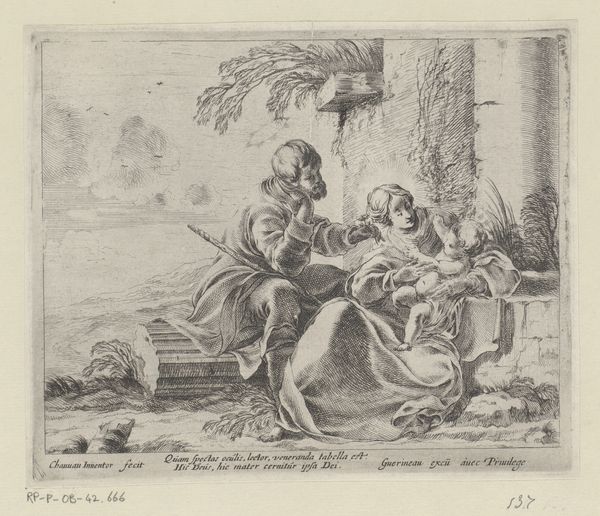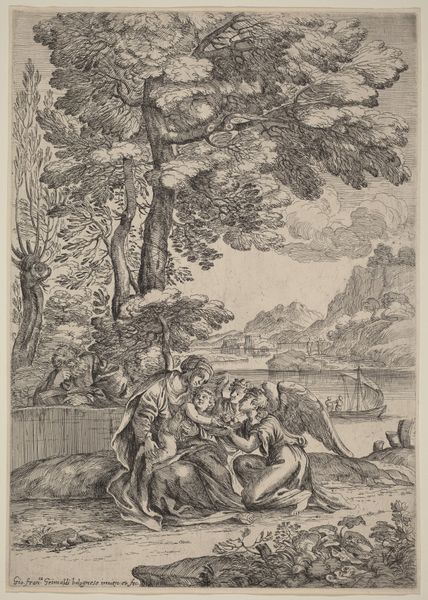
Spotprent op de rede van Van Nispen waarin hij klaagt over het Darwinistische onderwijs, 1873 1873
0:00
0:00
#
quirky sketch
#
sketch book
#
personal sketchbook
#
sketchwork
#
ink drawing experimentation
#
pen-ink sketch
#
sketchbook drawing
#
watercolour illustration
#
storyboard and sketchbook work
#
sketchbook art
Dimensions: height 275 mm, width 215 mm
Copyright: Rijks Museum: Open Domain
Editor: This is a cartoon from 1873 by Johan Michaël Schmidt Crans, titled "Spotprent op de rede van Van Nispen waarin hij klaagt over het Darwinistische onderwijs". It appears to be ink on paper, and it immediately makes me think of a political commentary, a rather critical one given the stark imagery. What do you make of this work? Curator: Well, if we consider the historical and material context, we can interpret it as a response to the growing influence of Darwinism and its impact on education. Look at the materials; it is an easily reproduced ink drawing meant for mass consumption. This highlights its role as a tool in a broader social debate. How do the figures depicted, a sort of Adam and Eve but distinctly simian, relate to your understanding? Editor: It seems to be suggesting that Darwinist education is leading us backwards, making us less human. I guess Van Nispen believed in creationism, then. Curator: Exactly! The print highlights a fear of science undermining traditional religious narratives, using readily available materials and reproduction to proliferate a counter narrative. It shows a material opposition to social changes being forced on the education of citizens. The banner reading “Godsdienstlooze Burgers” suggests this link. Consider, then, how accessible print culture facilitated this kind of dialogue and shaped public perception of scientific advancements. Do you agree that that shapes public perception? Editor: Yes, that makes complete sense. The choice of easily accessible materials makes the message readily available. Curator: The materials, then, become inherently part of the argument itself, turning art into a cog in the larger machinery of social discourse and cultural production. Editor: I never thought about it quite that way before. Thanks, that has been quite insightful. Curator: It has been a great opportunity to look at it through fresh eyes.
Comments
No comments
Be the first to comment and join the conversation on the ultimate creative platform.
